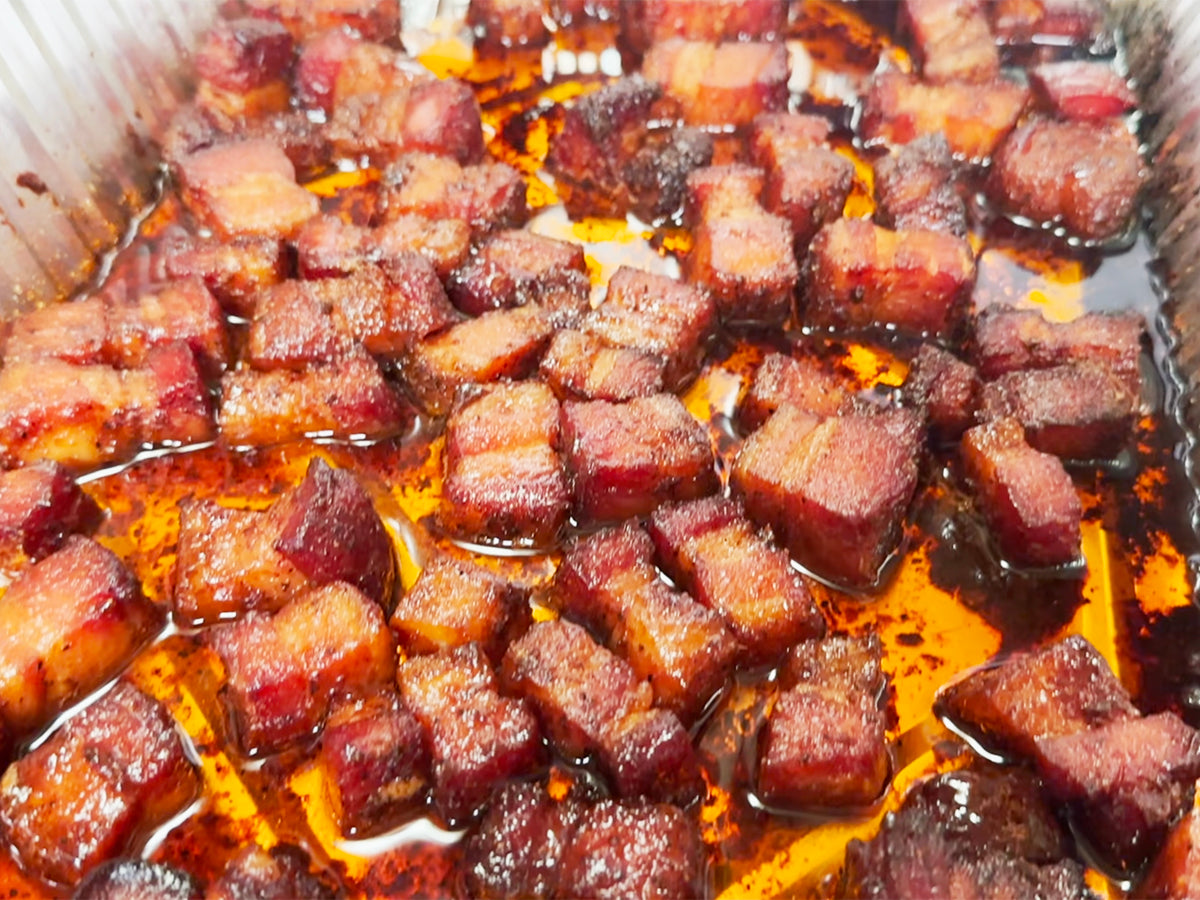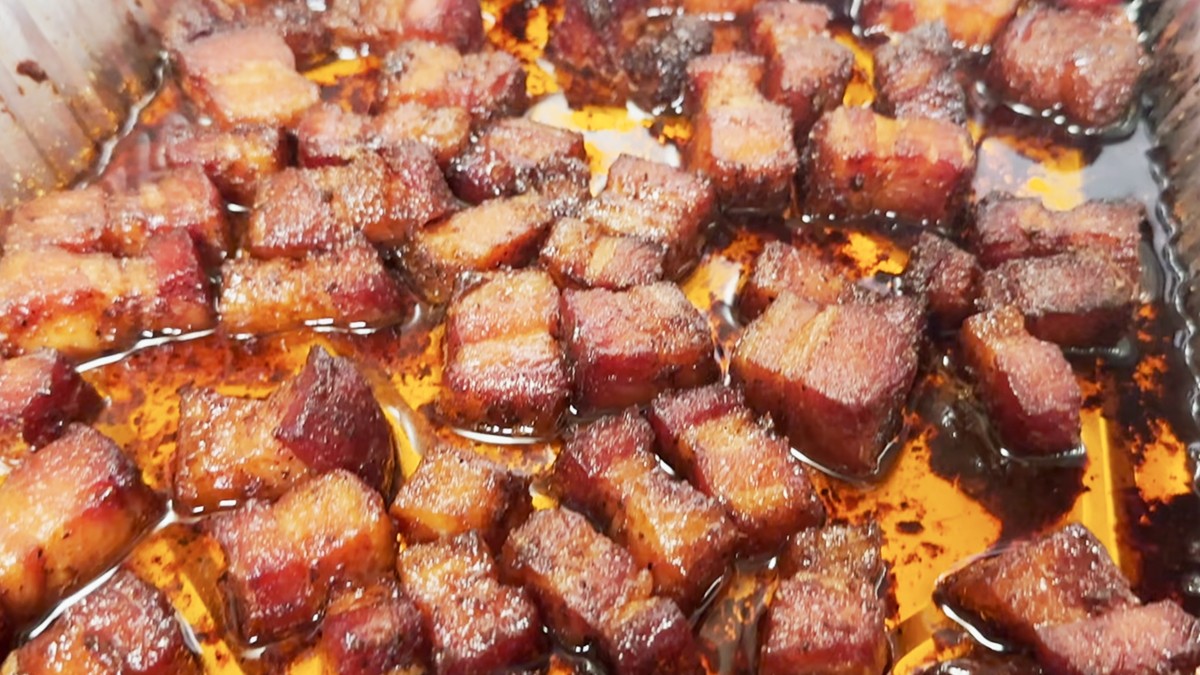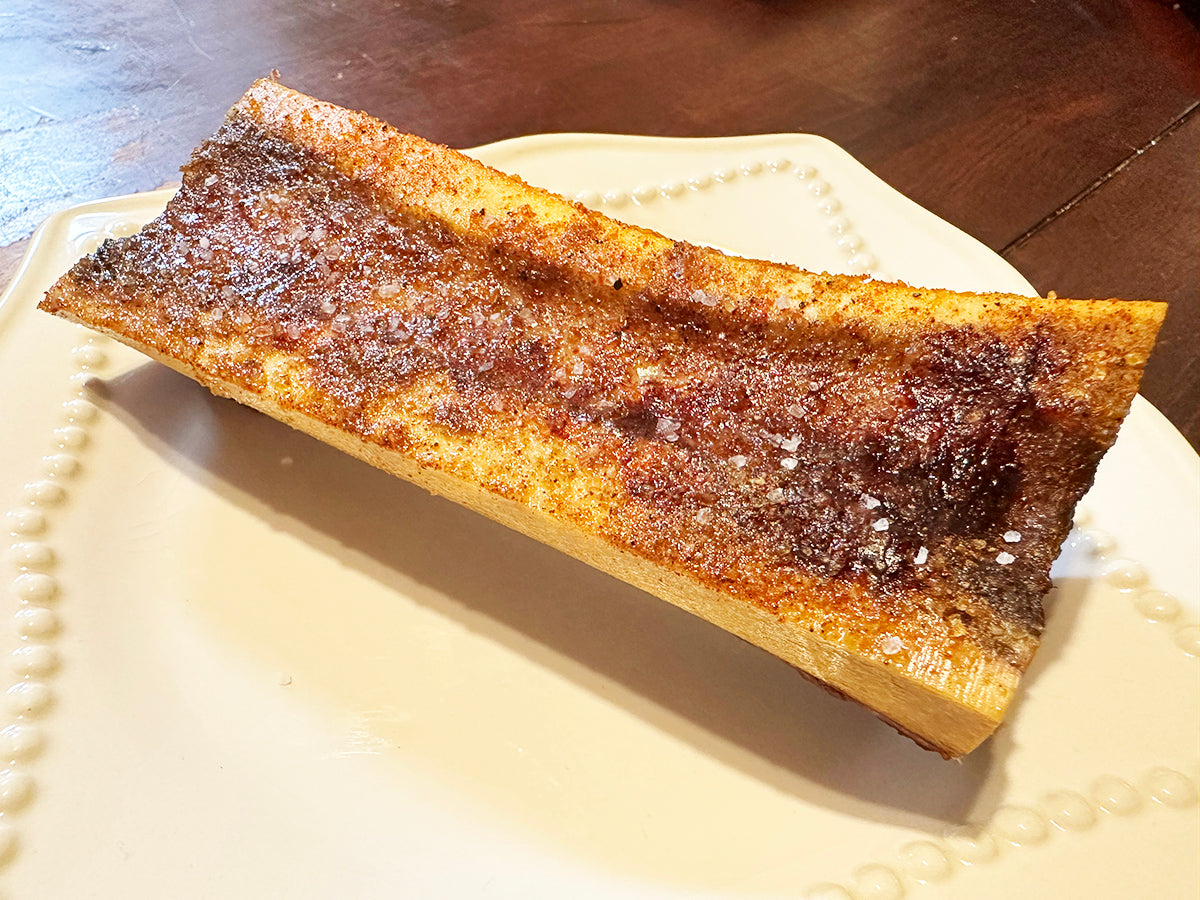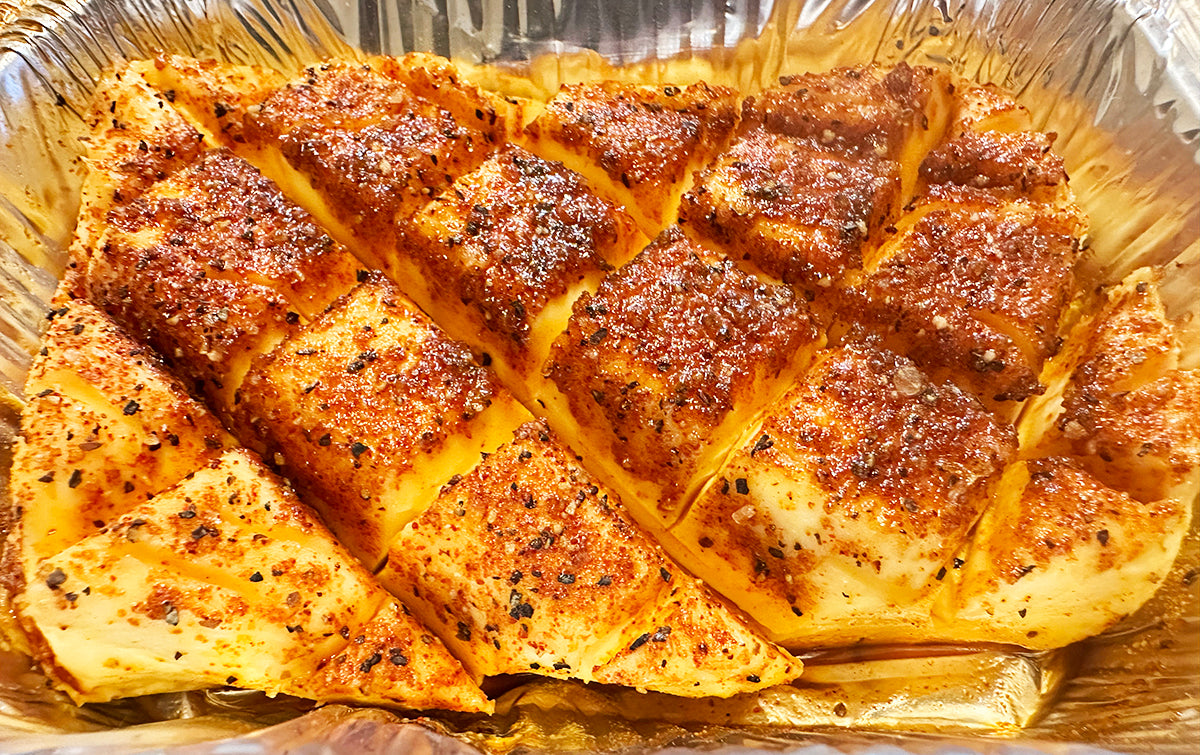Pellet Smoker Pork Belly Burnt Ends

What are Pork Belly Burnt Ends?
Pork belly burnt ends are a flavorful and indulgent barbecue dish made from the fatty and flavorful pork belly. While traditional burnt ends are typically associated with beef brisket, pork belly burnt ends have gained popularity for their rich and succulent characteristics.
Can you make pork belly burnt ends from bacon?
Absolutely!!! Making pork belly burnt ends from bacon can indeed result in delicious and flavorful bites. While traditional pork belly burnt ends use raw pork belly and go through a specific smoking and seasoning process, using bacon offers a unique twist.
Why don't you need more salt to make burnt ends from bacon?
When making burnt ends from bacon, the bacon has already undergone a curing process that involves the application of salt (and possibly other curing agents) during the preparation of the pork belly. This curing process not only imparts a savory flavor to the bacon but also serves to preserve the meat. As a result, the bacon is likely to retain a sufficient amount of salt from the curing process.
Here's why you often don't need to add extra salt to the seasoning mix when making burnt ends from bacon:
1. Salt Absorption During Curing:
- The curing process involves applying a salt mixture to the pork belly and allowing it to absorb the salt over time. The salt is absorbed into the meat, seasoning it throughout. The high salt content in the curing mixture ensures that the bacon is well-seasoned.
2. Preservation and Flavor Enhancement:
- Curing not only preserves the bacon but also contributes significantly to its flavor. The salt in the curing mixture plays a key role in both preserving the meat and enhancing its taste. The salt content from the curing process is usually sufficient to impart a savory flavor to the bacon.
3. Concentration of Flavors:
- As the bacon is cured and then smoked, the flavors become concentrated. The combination of salt, smoke, and the natural flavors of the meat creates a well-balanced and flavorful base. Adding additional salt to the seasoning mix for burnt ends might lead to an overly salty end product.
4. Risk of Over-Salting:
- Adding extra salt to the seasoning mix for burnt ends can risk over-salting the final dish. Since the bacon has already absorbed salt during the curing process, it's essential to avoid excessive saltiness that could overpower the other flavors.
5. Balanced Flavor Profile:
- The goal when making burnt ends is to achieve a balanced and harmonious flavor profile. The bacon, having been cured, contributes its own unique taste, and adding extra salt may upset this balance.
6. Personal Preferences:
- While some individuals may prefer a saltier taste, many find that the salt from the curing process is sufficient to provide the desired level of seasoning. The overall seasoning preferences can vary, so it's advisable to taste the finished product and adjust seasoning based on personal preferences.
When making burnt ends from bacon, the salt used in the curing process is often enough to season the meat adequately. It's recommended to taste the burnt ends before adding additional salt to avoid over-salting and to ensure a balanced and flavorful result. Adjusting the seasoning based on personal taste preferences is always a good practice in the kitchen.
How to make pork belly burnt ends?
Using a pellet smoker for pork belly burnt ends with the confit method involves slow-cooking pork belly cubes in their own rendered fat or another flavorful fat at low temperatures. Pellet smokers are well-suited for this method as they offer precise temperature control and the ability to impart a rich smoky flavor.
What is confit?
Confit is a cooking method that involves slow-cooking food in fat at low temperatures. The term "confit" is derived from the French verb "confire," which means to preserve. Originally used as a preservation technique, confit has evolved into a culinary method known for producing tender, flavorful, and succulent results.
In the context of bacon burnt ends, the confit method is particularly effective due to the following reasons:
1. Tenderization: Confit involves slow-cooking in fat at a low temperature, allowing the collagen in the meat to break down into gelatin. This slow breakdown of collagen results in exceptionally tender and moist meat. For bacon burnt ends, which are typically made from pork belly, the confit method helps achieve a melt-in-your-mouth texture.
2. Flavor Infusion: Confit allows the flavors of the meat to meld with the fat during the slow-cooking process. This means that the bacon, cooked in its own fat or another flavorful fat, absorbs rich, savory flavors. The slow cooking enhances the natural flavors of the meat, creating a depth of taste that is often highly desirable.
3. Moisture Retention: The fat used in the confit method acts as a seal, helping to lock in moisture and prevent the meat from drying out. This is particularly important for cuts of meat with a higher fat content, such as pork belly, as it ensures that the final product is juicy and succulent.
4. Crispy Exterior: While confit is a slow-cooking method that imparts tenderness, bacon burnt ends benefit from an additional step after confit to achieve a crispy exterior. After the confit process, the bacon cubes are often crisped up by being roasted or grilled. This combination of tender, flavorful interior and a crispy exterior creates a delightful contrast in texture.
5. Flavorful Fat for Cooking: The fat used in the confit process not only contributes to the tenderness and flavor of the meat but also serves as a flavorful medium for cooking. The bacon cubes are essentially braised in their own fat, enhancing the overall richness of the dish.
6. Versatility: Confit is a versatile cooking method that can be applied to various meats, including pork belly for bacon burnt ends. This adaptability allows chefs and home cooks to experiment with different flavors and seasonings, creating unique variations of the dish.
The confit method is well-suited for bacon burnt ends because it results in tender, flavorful, and succulent meat. The slow-cooking process in fat enhances the natural taste of the bacon, while the final crisping step provides a satisfying texture contrast. Overall, the confit method contributes to the deliciousness and indulgence of bacon burnt ends.
What Happens During Slow and Low Rendering in a Pellet Smoker?
1. Gentle Melting:
- Slow and low rendering in a pellet smoker involves maintaining a low temperature, typically below the smoke point of the fat. This gentle heat allows the fat to melt slowly without reaching temperatures that can cause it to smoke or burn.
2. Connective Tissue Breakdown:
- The slow heat breaks down the connective tissues that hold the fat in place. This process separates the fat from the meat, making it easier to collect and use for cooking or other purposes.
3. Flavor Infusion:
- The slow rendering process allows for a more gradual release of flavors from the fat. This can impart a rich and savory taste to the surrounding meat, contributing to the overall flavor profile of the dish.
4. Preventing Burning or Overcooking:
- Slow and low rendering helps prevent the fat from reaching temperatures that could cause it to burn or become overly browned. This is crucial for maintaining the quality and flavor of the rendered fat.
5. Preservation of Nutrients:
- The slow rendering method helps preserve the nutritional qualities of the fat, including any fat-soluble vitamins present.
6. Smooth Consistency:
- The slow and low approach allows for a smooth and consistent texture in the rendered fat. This is desirable for culinary applications where a uniform and silky consistency is preferred.
In summary, slow and low rendering in a pellet smoker is a method that gently transforms solid or semi-solid fat into a smooth liquid state. This process ensures the preservation of flavors, prevents burning, and produces a high-quality rendered fat that can enhance the taste and texture of dishes.




Comments